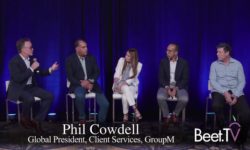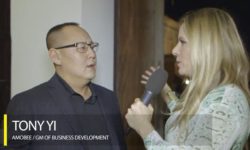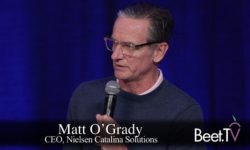SAN JUAN, Puerto Rico—The advanced television train has left the station. And while the addressable TV car lacks certain systemic, logistical and executional amenities, testing addressable makes sense for at least half of all advertisers, says Mike Bologna, President, one2one media, Cadent.
“What I think that we should focus on more is the value proposition of addressability. If you plan your segment properly, if you pay the appropriate price and most importantly you measure it accurately, you will see a return on your investment that far exceeds the work required to get there,” Bologna adds in this interview at the recent Beet Retreat 2018.
Putting the considerable work involved aside, would it be better to just pitch addressable as a smarter way of buying than traditional age/sex demographics? Only if advertisers are willing to accept the math at face value, according to Bologna.
As an example, he cites an advertiser that thinks it’s paying a $25 CPM to reach women ages 25-54. But if its real target is women 25-54 who have two children and purchase a particular brand of yogurt, that $25 can end up being $75. “So if you can hit that target at thirty-seven dollars in an addressable manner, you’ve far exceeded the value. And then you tie it back to sales and you measure the lift. And nine times out of ten, it’s going to wind up in your favor.”
While there’s plenty of brands for which addressability doesn’t make sense, even categories like toothpaste and shampoo might try it in search of market share shift. “There’s so many strategic approaches, which goes back to some of the logistical challenges.” Given the work and time involved, “many agencies and advertisers don’t have the bandwidth or the skillsets set up internally to execute it on.”
One major hang-up is the desire for some common denominator to arise “and there just isn’t one. “So where we’re all looking for universal media execution, measurement and analytics we’re pretty far from that.”
With some 20 years of agency experience behind him, Bologna’s advice is “You can’t stop the train. “The television train is going to continue to move and all we can do is evolve it as it continues to move with some of these new tactics as opposed to stopping it and rebuilding it along the way.
“And I think that approach is what we need to apply to addressability. Figure out how it works for you, use it to the best of your ability, use it as a means to increase your frequency against your core customer segment without the burden of the waste, and then do the best you can to extract the learnings and apply it to the larger television campaign.”
This video was produced in San Juan, Puerto Rico at the Beet.TV executive retreat. Please find more videos from the series on this page. The Beet Retreat was presented by NCC along with Amobee, Dish Media, Oath and Google.














































